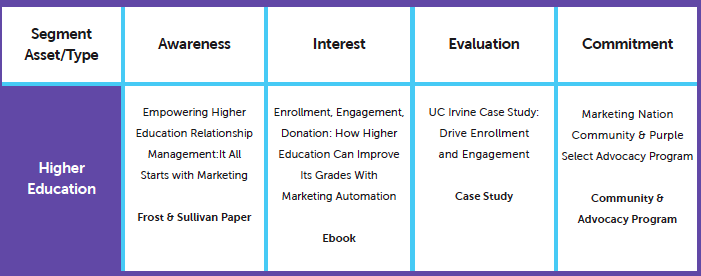![How to Create Content for Your ABM Strategy [Infographic]](https://www.business2community.com/wp-content/uploads/2016/09/How-to-Create-Content-for-Your-ABM-Strategy-Infographic-300x200.jpg.jpg)
You’ve likely heard of account-based marketing (ABM) by now. You might be thinking about whether it’s a good fit for your organization or may already have an ABM strategy in place. Regardless of whether you’re just beginning to explore ABM or are already an expert, you need to create awareness and engage with today’s overwhelmed buyers. That’s where content plays a key role.
Content is a way (in my opinion, the best way) to offer value to your larger audiences and your targeted audiences, and value is what will break through the noise. You may have used content in other marketing initiatives or for your broad-based marketing strategies, but with a few key techniques, you can create scalable content that supports your ABM programs across the entire customer lifecycle.
Let’s take a look at a few ways you can create scalable, personal, and relevant content to support your ABM strategy and engage your target audiences:
Do Your Research
Good content starts with understanding your audience, and that’s even more important when your audience is a specific set of people in target accounts. A wonderful thing about ABM is that the strategy basically requires you to have a deep understanding of your target accounts and their pain points. This is the same foundation, albeit maybe with a bit more detail, that you need for creating interesting and relevant content for your target audience. A few key questions to ask:
- Who are your key personas?
- What do they care about?
- Where do they consume information?
- When do different types of content work best?
You may find that within a specific target account you have a few different types of audiences—executive and practitioner, technical and strategic. Documenting these for your specific target accounts is important, but so is understanding whether there’s a trend across your target accounts.
Understand What Exists
Creating original content takes resources—time and money. Before you start to create brand new content, make sure you take a look at what content you already have, which will help you use your content resources more effectively. You may already have a comprehensive list of content with details about the date it was created, which audience it was for, whether it’s early-, mid-, or late-stage content, etc. But, if you don’t have that, it’s probably worth creating, at least as it pertains to your target accounts. This will help you identify content that already speaks to your target audiences and still works, needs an update, or needs to be retired; it will also help you identify content gaps.
Create a Plan
Once you have an understanding of who you are creating content for, what content you already have, and the gaps that exist, you can start building a content strategy for your target accounts. Use a content/message matrix to map what content or message you will use to reach your target accounts across the entire buying journey.
Here’s an example from our ebook, A Recipe for Lean ABM ebook, that shows mapping content to the buying journey of a Higher Education target account.
Personalize at Scale
Before you get overwhelmed, realize that the personalized content you’ll need for each stage of the buying journey doesn’t need to be created from scratch. Repurposing your existing content is a great way to create personalized content at scale. Revisit your content library and determine what can be tweaked to resonate with your target audience. For instance, can you personalize a general ebook for your target accounts by adding in more industry examples and changes some of the terminology? Can you up-level the messaging on a whitepaper to speak to an executive versus a practitioner? There are different ways to spin your content to speak to a specific company or industry. That being said, you should still consider creating fresh content that is tailored to your key accounts and the individuals within them, but this way, you can save your resources for those bigger efforts.
Like anything in marketing, you can map out audience attributes, analyze their behaviors, understand your existing assets, and create a plan, but you must be ready to iterate. Build testing into this process. If a specific visual, message, or content asset does not work for your target audience at a specific stage of their buying journey, test something else. The best ABM, including content for ABM, adapts to your target accounts’ needs to ultimately deliver value.
Want more tips on creating content for ABM? Check out our infographic, Operation ABM: Top-Secret Tricks to Creating Content for Your Target Accounts.

